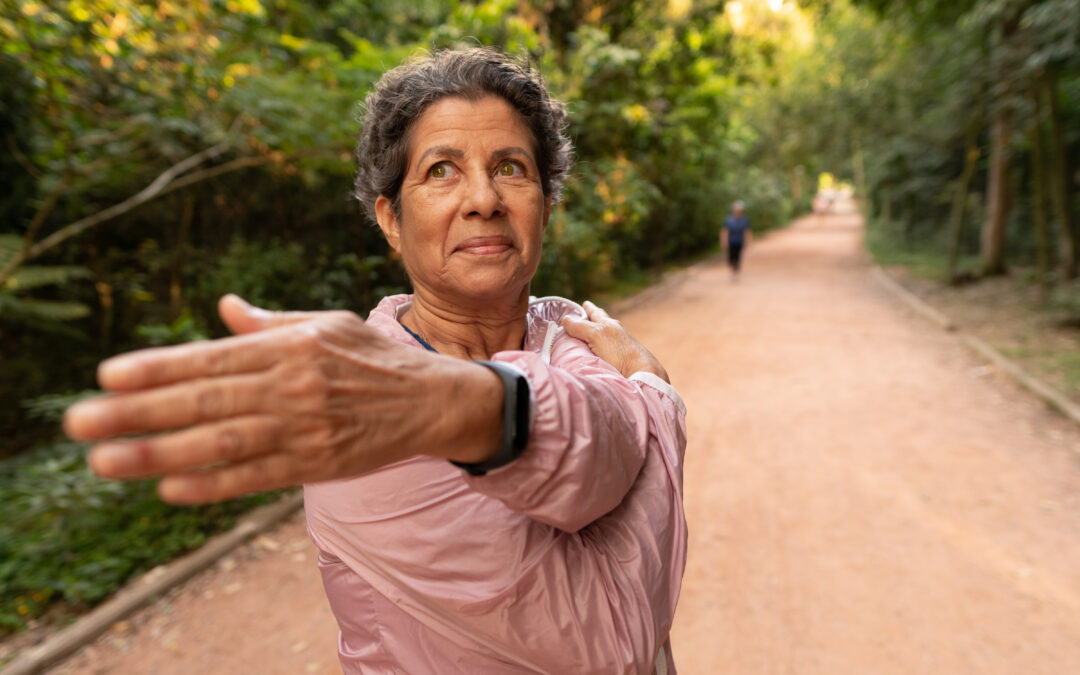…. OR THE IMPORTANCE OF EXERCISING BEFORE, DURING AND AFTER TREATMENT
Dear Friend,
It’s October, the NFL goes pink and we know it’s Breast Cancer Awareness Month. No better time to take a closer look at the relationship between Breast Cancer and Fitness Training/Physical Therapy.
Before exploring the effect a Breast Cancer diagnosis has on your ability to pursue Fitness Training at the different stages of the treatment let’s look at a few CDC (Center for Disease Control) numbers that help us understand why we need Breast Cancer Awareness Month.
Data:
Breast Cancer is the number one cancer amongst women no matter there ethnic and racial backgrounds (except a couple of skin cancer types). It is the number one reason for Hispanic women to die of Cancer and the number two cause for all other women living in this country when dead is caused by cancer. In 2009 roughly 200,000 women and about 2000 men in the USA were diagnosed with breast cancer, in the same year approximately 40,000 women and 400 men died of the disease.
Types:
There are many different types of breast cancer, that vary depending:
- on the origin, location of tumor at onset of the disease
- on whether it is invasive or non-invasive, tumor growth stays confined within the tissue of it’s origin or infiltrates other neighboring tissue types.
- on whether it metastasized through the lymphatic system
- on the microscopic appearance and the degree of difference from healthy cells (cancer grade)
- on the degree of hormone involvement, some types are driven by high levels of estrogen and progesterone (female hormones)
- on their genetic make up.
The most common non-invasive breast cancer is ductal carcinoma in situ, being diagnosed about 60,000 times per year in the USA. The type of cancer you are diagnosed with determines your treatment and prognosis.
Treatment:
Surgical:
- Lumpectomy, is surgery to remove cancer or other abnormal tissue from your breast. Lumpectomy is also called breast-conserving surgery.
- Mastectomy, is surgery to remove all breast tissue from a breast as a way to treat or prevent breast cancer.
- Lymph node dissection is part of diagnosis as well as treatment. When treated either a regional lymph node dissection , (some of the lymph nodes in the tumor area are removed); or a radical lymph node dissection (most or all of the lymph nodes in the tumor area are removed, also called lymphadenectomy) will be performed.
Non surgical:
- Radiation Therapy uses targeted, high-energy X-rays to kill cancer cells. The goal of radiation therapy is to kill any cancer that might be left in or around the breast.
- Chemotherapy uses drugs that kill or disable cancer cells. Chemotherapy is an option for most types of breast cancer. The decision to use chemotherapy is based on the tumor stage and certain tumor characteristics, as well as your age, overall health and personal preferences.
- Hormone Therapy addresses the types of breast cancer that are driven by estrogen and progesterone are considered hormone receptor-positive. When the hormones attach to special proteins called hormone receptors, the cancer cells with these receptors grow. Hormone therapies slow or stop by depriving the cancer cells of the hormones that feed them.
- Targeted or Immuno-Therapy targets specific tumor cell characteristics such as a specific protein that feeds the cancer cell. Targeted or Immuno-Therapies are less likely to attack healthy cells as chemo therapy will and therefore create less unpleasant side effects.
- I believe Exercise and Physical Therapy should be included in the catalog of treatments as they not only help easing side effects caused by other forms of treatment, but reestablish bodily function and quality of life, provide a sense of normalcy, and help preventing recurrence.
Exercise and Physical Therapy:
If we accept Exercise and Physical Therapy as a form of treatment we need to answer the questions as to
- why and when it is appropriate to introduce Exercise and PT to the patient, and
- how Exercise and PT may be influenced and/or has to be modified by and because of other forms of treatments used.
Most risk factors that increase the chances of getting breast cancer are non-modifiable such as age, sex, genetics etc. with one exception, body composition. The greater the percentage of adipose tissue the greater the amount of Estrogen produced in the female body. Breast Cancer driven by female hormones (Estrogen and Progesteron) are the most commonly diagnosed forms of breast cancer. Body Composition is modifiable through Nutrition and Exercise. In other words Exercise plays an important role in the prevention of hormonally driven breast cancers.
After having been diagnosed with breast cancer and introduced to a treatment plan many patients opt to use a moderate exercise program including aerobic activities and strength and resistance training to prepare for the upcoming surgical and non-surgical treatment regimen. Studies show that this type of preparation leads to an increased level of energy throughout the treatment phase, as well as a shortened recovery especially from surgery, and a better tolerance of the very much dreaded side effects stemming from chemo and radiation therapy.
Surgical procedures such as lumpectomy, mastectomy and lymph node dissection lead frequently to a loss of strength and mobility in the shoulder and arm of the affected side. These negative consequences are often further exacerbated by the possibly following radiation treatment. Physical Therapy and exercises prescribed by a Physical Therapist help to restore movement, function, strength and enable the patient to return to his or her regular activities of daily living. Exercising as part of the rehabilitation process needs to be closely monitored by the patient, the therapist, trainer and health care provider to prevent negative side effects such as Lymphedema. If the patient is undergoing radiation and/or chemo therapy immune responses are often reduced and lead to a greater risk for infections. During these times patients are better advised to train in privacy and avoid public places such as gyms and parks. Another common side affect of chemo and radiation treatment is extreme fatigue. Individuals presenting with extreme fatigue should exercise at significantly reduced intensities or even temporarily suspend all exercises.
Lymphedema is a non curable side effect of removal or damage to lymph nodes as part of cancer treatment. It commonly effects one arm or leg but may lead to swelling in both extremities on occasion.The swelling is caused by a blockage of the lymphatic drainage system. Some patients and doctors fear that exercise especially weight lifting might contribute to the development of lymphedema. Many others belief that the benefits of exercise outweigh the risk of Lymphedema by far. No matter what side you come down on, it is important to be alert and aware to the risk and notify your doctor as soon as you notice any type of unusual sensations or swelling. To reduce the risk of lymphedema discuss your exercise program with your physician and Lymphedema specialist prior to starting. In many cases it is advised to seek help from a Physical Therapist or Fitness Trainer before starting a home based fitness regimen.
Though the issue is complex it seems that those exercising regularly after finishing treatment have a greater survival rate than those who become less active or inactive. The reason why exercise plays a major roll in preventing recurrences is most likely the same as in primary prevention, the control of body weight and body composition.
The following is a proposed model for prescribing exercise to breast cancer survivors:

Conclusion:
Staying physically active and taking advantage of Physical Therapy and customized fitness training has advantages at any stage, as prevention, as preparation for treatment, during rehabilitation and treatment and to prevent recurrence.When starting a strength training program after finishing your cancer treatments I would advise you to hire the services of an expert Fitness Trainer or Physical Therapist that has experience in working with breast cancer survivors. These specialists can get you started slowly and teach you to be cautious and patient getting you on the road to recovery.As always I hope I was able to provide some useful information to you and welcome your questions and comments.
A Sante,
Hartmut
Sources:
http://www.breastcancer.org/tips/exercise/why
http://cancerpreventionresearch.aacrjournals.org/content/4/4/476.full
http://www.cancer.org/cancer/breastcancer/moreinformation/exercises-after-breast-surgery
http://www.webmd.com/breast-cancer/exercise-nutrition-after-breast-cancer-surgery
http://www.health.harvard.edu/books/Breast-Cancer-Survivors-Fitness-Plan
http://ww5.komen.org/BreastCancer/UnderstandingBreastCancer.html
http://www.mayoclinic.com/health/breast-cancer/HQ00348/NSECTIONGROUP=1
http://www.ncbi.nlm.nih.gov/pubmed/21253795 http://www.ncbi.nlm.nih.gov/pubmed/15867843
http://www.mayoclinic.com/health/lymphedema/DS00609

